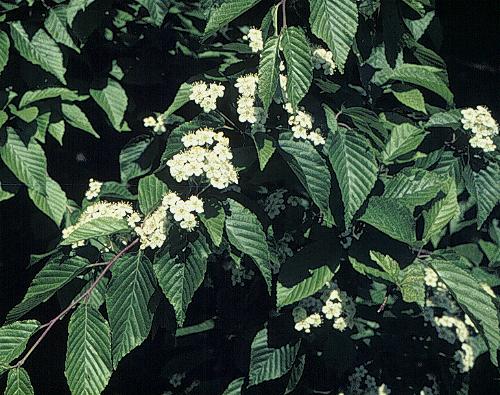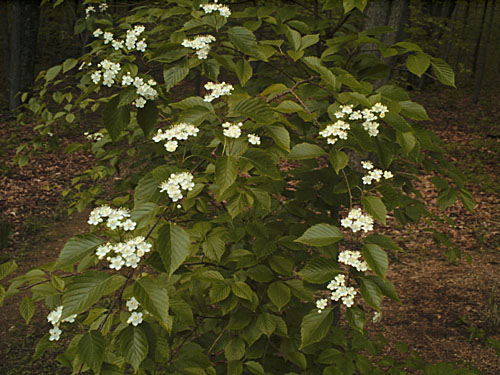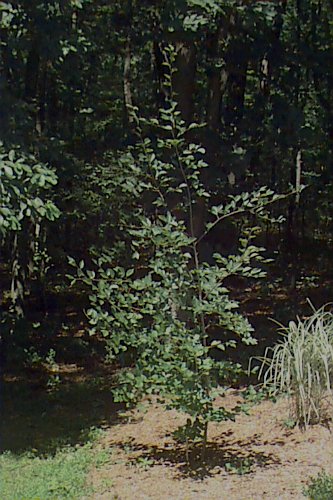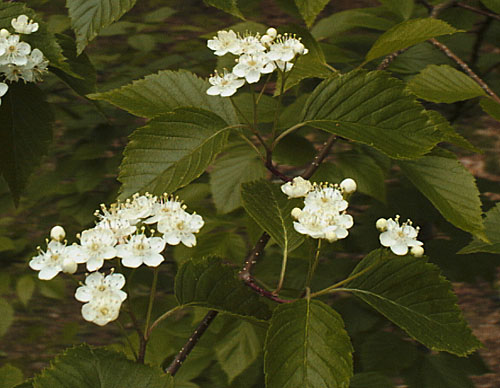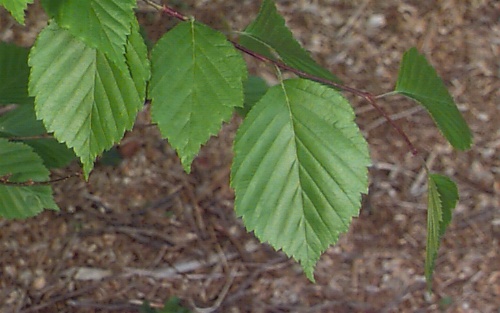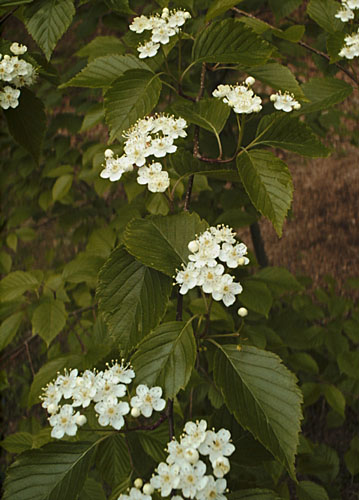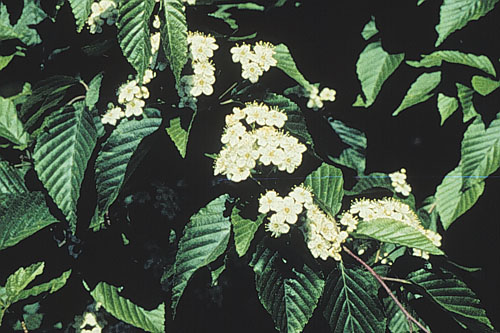Sorbus alnifolia
Korean Mountainash
Rosaceae
ExpandHabitat
- native to central China, Korea and Japan
- hardy to zone 4
Habit and Form
- a deciduous tree
- 40' to 50' tall
- 20' to 30' wide
- pyramidal in youth
- broad, rounded crown when mature
- medium texture
- medium growth rate
Summer Foliage
- alternate leaf arrangement
- simple, deciduous leaves
- 2" to 4" long
- ovate leaf shape
- unequally serrated leaf margins
- fine pubescence
- dark green leaf color
Autumn Foliage
- yellow to golden brown fall color
Flowers
- white flowers
- 0.5" in diameter
- borne in corymbs, 2" to 3" across
- 6 to 10 flowers clustered in corymbs
- blooms in May
Fruit
- rounded pome
- pinkish red to red
- matures in September
- persist
Bark
- gray bark color
- smooth
- reddish brown stems with gray lenticels
Culture
- transplant from B&B
- prefers well-drained soil
- Ph adaptable
- prune in winter
Landscape Use
- specimen tree
- park tree
- large open area
Liabilities
- stress predisposes the plant to disease and insect problems
- very susceptible to borers
- frequently develops fireblight
- other insect and disease pests include cankers, rusts, aphids, sawflies, and scales
- often short-lived in the landscape
ID Features
- diamond shaped lenticels on older bark
- terminal buds are oblong, sessile and pubescent
- ovate leaf shape
- white flowers in corymbs
- red fruit
Propagation
- by seed
Cultivars/Varieties
'Redbird' (probably the same as 'Skyline') - This is an upright-columnar form with red, persistent fruit and good yellow fall color. It is not seen commonly in commerce.
